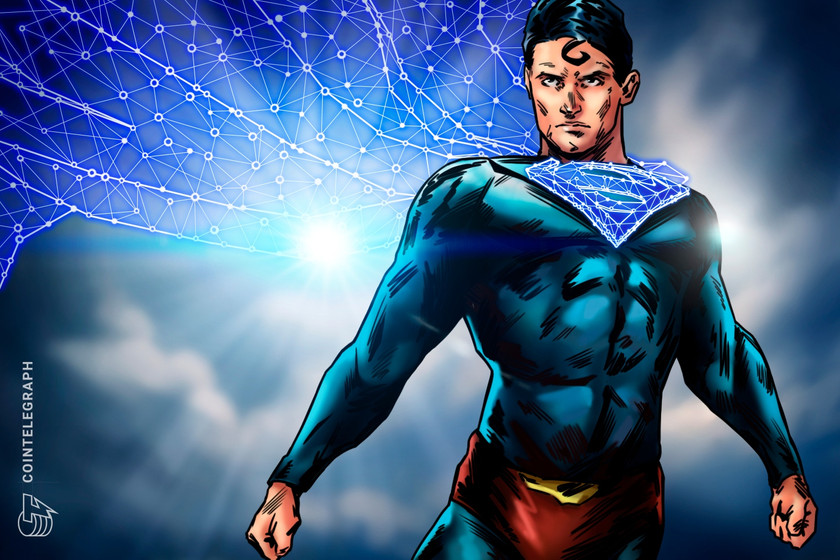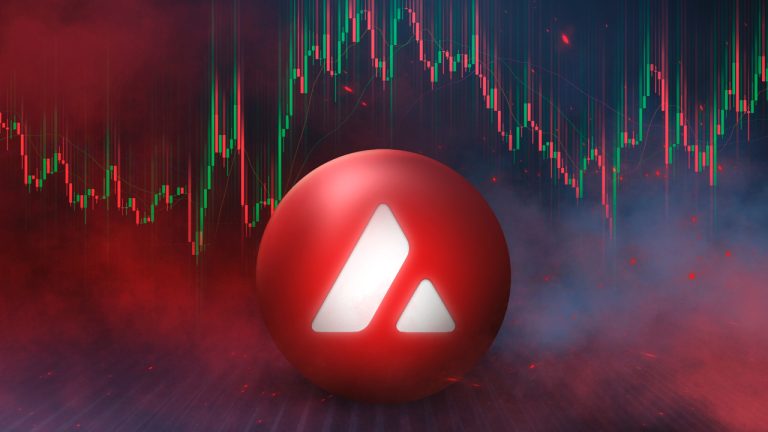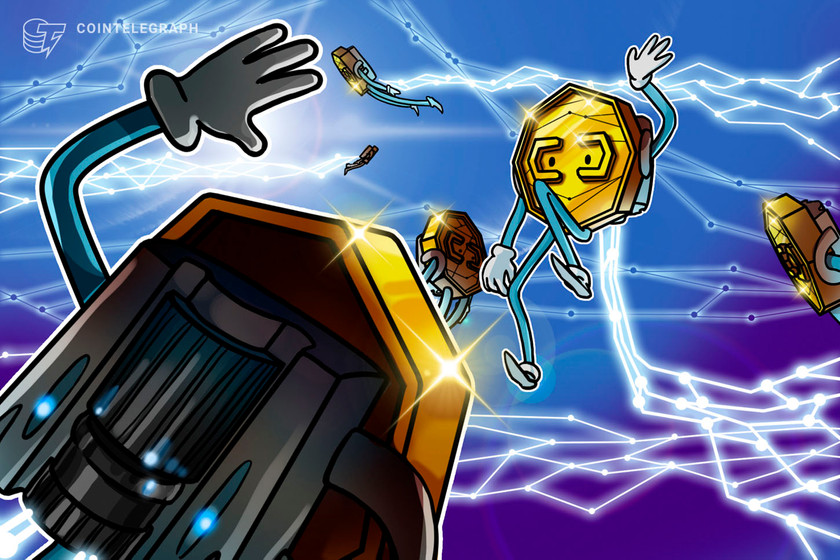- Home
- sidechains
sidechains
BIP-300 biff: Debate reignites over years-old Bitcoin Drivechain proposal

The proposal would allow other blockchains to be built on the Bitcoin network. In August, a core developer rewrote the proposal’s code and requested it be added to Bitcoin’s codebase, sparking new debate over its merits.
A debate has reignited among Bitcoiners over a six-year-old Bitcoin Improvement Proposal (BIP) to add “sidechains” on top of the network, with some warning it could increase scams on the Bitcoin network and others saying it will bring new users of the cryptocurrency.
Meanwhile, one developer claims to have found a way to achieve the proposal’s goal without a soft fork of the blockchain.
The proposal in question, BIP-300 — also known as Bitcoin (BTC) Drivechains — was first introduced in 2017, which proposed introducing “sidechains” that are separate blockchains on top of the Bitcoin network.
Paul Sztorc, the proposal’s author and founder of the Drivechain development firm LayerTwo Labs — which raised $3 million in December — has explained that the blockchains would allow for BTC to move onto them and create altcoins.
This is how Bip300 can eliminate all crypto and fiat transactions, leaving only Bitcoin pic.twitter.com/1TwQsu9ZPj
— LayerTwo Labs (@LayerTwoLabs) July 10, 2023
The debate over the proposal was kicked up again on Aug. 22, when a Bitcoin core developer known as Luke Dashjr rewrote the proposal’s code and requested to add it to Bitcoin’s codebase.
BIP-300 would require a soft fork of Bitcoin that would be activated by miners — not unlike the Taproot soft fork in November 2021 that paved the way for the equally controversial nonfungible tokenemulating Ordinals and BRC-20 tokens that launched earlier this year.
On Sept. 10, Maxim Orlovsky, the CEO of blockchain scaling solutions project Pandora, posted on X (Twitter) claiming he was able to create a two-way peg on Bitcoin without a soft fork of the blockchain, which BIP-300 requires.
Just understood that one can do cryptoeconomically-safe trustless 2WP on #Bitcoin without any softfork today - using Prometheus - our 5-year old proposal for arbitrage of any high-load Turing-complete computing on top of Bitcoin: https://t.co/NljYszgkk7 pic.twitter.com/wV5MDuqUov
— Maxim Orlovsky (@dr_orlovsky) September 10, 2023
In an accompanying note, Orlovsky explained an old project proposal could work as a BIP-300 alternative with an oracle working to validate a sidechain and “the protocol will reach consensus on whether the state reported by the oracle is correct.”
Details, so far, are sparse. Orlovsky said he would work on a paper describing the setup “in [an] understandable way.”
Meanwhile, BIP-300 proponents, including Sztorc, argue that Drivechains will allow users to choose a blockchain security model they agree with and how they want their Bitcoin to work. Sztorc also claimed the proposal has “enormous upside” with “literally zero downside.”
Related: No, Bitcoin withdrawals from exchanges are not inherently bullish for crypto
Others, including Cory Klippsten, the chief of the BTC-only exchange Swan Bitcoin, rejected the proposal — with Klippsten claiming Drivechains would increase the amount of scams on Bitcoin, which may catch the ire of regulators.
One potential downside of Drivechains:
— Cory Klippsten | Swan.com #Bitcoin (@coryklippsten) August 27, 2023
Having lots of scams on Bitcoin will make people and regulators (understandably) think that Bitcoin is full of scams.
Pierre Rochard, the VP of research at Bitcoin miner Riot Platforms, said the proposal’s messaging relies on “speculative economic arguments rather than substantive engineering ones” and added it was “pure hopium.”
Drivechain’s “force a softfork to kill sh*tcoins” marketing somehow manages to be both anti-bitcoin and anti-“crypto”. Also pure hopium. It’s a distraction. Strong NACK.
— Pierre Rochard (@BitcoinPierre) August 21, 2023
Others who lent their voice to support BIP-300 included educator Dan Held, who claimed that Bitcoin is better off with more speculative assets as they “introduce new audiences to Bitcoin.”
Meanwhile, Bitcoin wallet provider Casa co-founder Jameson Lopp said he’s yet to see a “convincing concern” of how sidechains could be dangerous to the main Bitcoin blockchain.
I'm generally in favor of finally fulfilling the promise of 2-way pegged sidechains. I've yet to see a convincing concern of how it could be dangerous to the main chain. Some folks have said it could be dangerous if a sidechain became more valuable than the base chain, but seems…
— Jameson Lopp (@lopp) August 30, 2023
He added if a sidechain becomes more valuable, it could signal that the base chain “should implement that sidechain’s features.”
Magazine: Recursive inscriptions — Bitcoin ‘supercomputer’ and BTC DeFi coming soon
Blockchains need an interoperable standard to evolve, say crypto execs

Blockchains without interoperability are like computers without an internet connection — incapable of transferring data and value, a Chainlink Labs executive says.
Blockchain technology needs a benchmark communications standard that can be easily integrated by every network in order for a complete transition from Web2 to Web3 to occur, industry commentators say.
Many expect there will be multiple blockchains and such an ecosystem requires communication protocols similar to the Transmission Control Protocol/Internet Protocol (TCP/IP) used on the internet.
Ryan Lovell, director of capital markets at crypto price oracle solutions firm Chainlink Labs, told Cointelegraph that blockchains without interoperability are like what computers are without the internet — isolated machines thacannot transfer data and value across networks.
“To realize a fully interoperable blockchain ecosystem at scale, there needs to be an open communication standard analogous to the TCP/IP, which currently serves as the internet’s de facto connection protocol.”
Lovell believed a similar standard for blockchain networks would “pave the way for a seamless, internet-like experience” for the platform and their applications.
This is particularly important given that the last bull market saw a host of new layer-1 blockchains make their mark. However, nearly all of them operate in isolation from one another.
Lovell stressed that blockchain interoperability is “crucial” for financial institutions looking to tokenize real-world assets because that would ensure that liquidity isn’t “stifled” by only existing in a “siloed ecosystem.”
Brent Xu, the founder and chief executive of Umee — a lending platform backed by Cosmos’ Inter-blockchain Communication Protocol (IBC) — tolCointelegraph that before real-world assets are brought on-chain, proper risk management systems need to be put in place to facilitate this interoperability.
Xu explained that financial institutions would need to tick off Know Your Client (KYC) credentials to ensure the authenticity of the real-world assets before being tokenized on-chain and then make sure that they can be identified by an on-chain proof-of-reserve audit.
In order to avoid an on-chain catastrophe, he stressed the risk of cutting corners simply isn’t worth it:
“Think of the ‘08 mortgage crisis. Tremendous financial value was lost due to a broken legacy system. Imagine if this value was ported into the blockchain ecosystem, we would see tremendous value loss due to the contagion.”
Cross-chain bridges, independent layer-2 sidechains and oracles are three of the most commonly used blockchain interoperability solutions to date. The first two operate solely on-chain, while the latter feeds off-chain data on-chain.
Related: Why interoperability is the key to blockchain technology’s mass adoption
There have been issues with some of these solutions, however, most notably cross-chain bridges.
An October report highlighted that half of all exploits in decentralized finance (DeFi) took place on a cross-chain bridge, the most notable example being the $600 million Ronin bridge hack in March 2022.
Xu noted that many of these hacks have come from multi-signature security setups or proof-of-authority consensus mechanisms, which are considered to be centralized and much more vulnerable to attack.
He added that many of these interoperability solutions favored “speed of development” over security early on, which backfired.
The key, Xu said, is to incorporate interoperability within the platform, as that will result in a more secure end-to-end transaction than through the use of third-party bridges:
“Bridges are particularly susceptible because they provide two ends at which hackers can potentially infiltrate any vulnerabilities.”
Among the most commonly used blockchain interoperability protocols are Chainlink’s Cross-Chain Interoperability Protocol (CCIP); the IBC, which leverages the Cosmos ecosystem; Quant Network’s Overledger and Polkadot.
Magazine: ZK-rollups are ‘the endgame’ for scaling blockchains, Polygon Miden founder
What is a supernet, and how does it work?

A supernet or umbrella network combines multiple smaller networks or blockchains into one larger network.
Supernets enable communication among distinct blockchain networks, considerably improving the usefulness of the overall system by enabling the transfer of assets and data among different blockchains.
Furthermore, shared infrastructure and resources can be made possible by interconnected networks, which can lower costs and boost overall effectiveness. By making assets accessible across numerous networks, they can significantly improve their liquidity, which will raise the assets’ value.
This article will discuss the concept of a supernet, how to implement supernetting, the advantages and disadvantages of supernetting, and how it’s different from a subnet.
What is a supernet?
A supernet, also known as a metanet, is a network of networks that allows interoperability and cross-communication among different blockchain networks. The idea behind a supernet is to create a decentralized network that allows different blockchain platforms to communicate and interact with one another without the need for a centralized intermediary, creating a unified ecosystem. Moreover, the effectiveness and speed of transactions and communications among various blockchains can be significantly increased as a result.
A supernet also has the advantage of facilitating the development of new decentralized services and apps that can combine the strengths of many blockchains. This may create fresh opportunities for development and innovation in the blockchain industry. Cross-chain communication is another feature of supernet that enables chains to connect and transact with one another, increasing the value for users.
Related: What are DApps? Everything there is to know about decentralized applications
How does a supernet work?
To implement a supernet, various protocols and technologies, such as atomic swaps, cross-chain communication protocols and sidechains, are used. These technologies allow different blockchains to communicate and interact with one another and can be thought of as a kind of “bridge” between different networks.
Atomic swaps, sometimes referred to as atomic cross-chain trade, enable cryptocurrency trading without the use of centralized intermediaries. This is accomplished by developing a smart contract on one blockchain that encrypts the assets being traded, unlocks them once the trade is complete, and releases them on the other blockchain. This allows assets to be transferred between blockchains without the need for a centralized exchange.
To enable communication and interaction across several blockchains, cross-chain communication protocols, such as Cosmos and Polkadot, are employed. These protocols enable the exchange of information and assets among many blockchains and the development of decentralized apps that can combine the advantages of various blockchains.
Another technology utilized in a supernet is sidechains. A sidechain is an additional blockchain that is connected to a main blockchain and permits the movement of assets between the two. This allows for greater scalability and privacy, as well as the ability to experiment with new technologies and consensus mechanisms without affecting the main blockchain.
How to supernet a network
A supernet, or network of networks, can be built using a variety of technologies and protocols, and it is a complicated process. Here is a general overview of the steps involved in creating a supernet:
Identify the networks to be connected
The process of building a supernet begins with identifying the various blockchain networks that are to be linked. To facilitate smooth communication and interaction, these networks should have identical protocols and objectives.
Implement atomic swaps
A crucial piece of technology to enable the transfer of assets among various blockchains, atomic swaps allow cross-chain trade among various blockchains.
Develop cross-chain communication protocols
Cross-chain communication protocols, such as Cosmos and other corresponding protocols, must be created to enable communication and interaction across various blockchains. These protocols enable the exchange of information and assets between several blockchains.
Create sidechains
A sidechain is a separate blockchain that runs parallel to a main blockchain and is connected to it through a two-way peg. This means that assets can be transferred from the main blockchain to the sidechain and vice versa. Each sidechain in a supernet has a specialized function, such as providing privacy and scalability or supporting particular assets.
Test and deploy
Once the supernet infrastructure is set up, it’s vital to test it thoroughly before deploying it. This step will help identify and fix any bugs or errors that may exist.
Promotion
The next stage once the supernet is set up is to promote the use of the brand-new infrastructure. Building a developer community, forming alliances with other initiatives, and putting in place rewards for people who join the network can all help achieve this.
The above steps offer a general overview of creating a supernet and the process can be complex and require different levels of expertise, depending on the specific use case.
How to identify a supernet address
A network address that is produced by fusing many network addresses is known as a supernet address. The process of identifying a supernet address is called supernetting or classless inter-domain routing (CIDR).
The following steps can be used to identify a supernet address:

For instance, let’s say there are two networks:

To supernet these two networks, one needs to find the largest network mask that can encompass both of them. In this case, the largest mask that would work is a /23 mask (255.255.254.0). The new network mass can be obtained by counting the shared leading bits in the network section of the addresses. This allows one to generate a supernet address by aggregating both networks into a single, larger network, which they can represent as:

This supernet can be used in place of the two individual networks, and any IP address within the range of the supernet will be routed to the correct destination network. Supernetting helps to reduce the number of routes in the routing table, making it easier for routers to manage network traffic and improving the efficiency of IP address usage. However, it is important to note that the process of supernetting requires a good understanding of internet protocol (IP) addressing and network subnetting.
Advantages of supernetting
CIDR is a technique used to create a supernet address by combining multiple network addresses. It has several advantages, including:
- Efficient use of IP addresses: More effective use of IP addresses is made possible by supernetting, which joins several networks into a single supernet. This can aid in IP address conservation and prevent IP address depletion.
- Improved routing efficiency: Supernetting can help minimize the number of entries in routing tables, which can lower the amount of memory and processing power needed to route traffic, resulting in improved routing efficiency.
- Easier network management: Supernetting can make network management easier by reducing the number of networks that need to be managed and configured. This can help to simplify network administration and reduce the number of errors and misconfigurations.
- Increased security: By lowering the number of computer networks and potential attack surfaces, supernetting can also improve security by making it more challenging for hackers to breach the network.
- Interoperability: It is a central feature of the SuperNet network and is achieved through the use of sidechains and cross-chain atomic swaps. This allows users to manage and trade digital assets across different blockchains in a seamless and efficient manner.
- Scalability: Supernetting enables the construction of networks that may be expanded or contracted as necessary to meet changing demands.
Despite the above advantages, supernetting should be done with caution, as it can also introduce new security risks if not done properly.
Disadvantages of supernetting
While supernetting, also known as CIDR, has many advantages, there are also some potential drawbacks to consider:
- Complexity: It can be a challenging technique that necessitates a solid grasp of IP addressing and network subnetting to perform supernetting. Furthermore, it may necessitate the use of specialized software and hardware, increasing the cost and network complexity.
- Security risks: If supernetting is done incorrectly, it can create new security problems. Combining several networks into a single supernet might increase the attack surface and make network security more challenging.
- Compatibility issues: Supernetting can create compatibility issues with some network devices or software that may not support CIDR.
- Increased complexity in routing: Supernetting can make it risky to find the proper path for packets, which can lead to an increase in routing complexity. Increased latency and poorer network performance may result from this.
- Lack of granularity: Supernetting can make it more difficult to segment a network and create smaller, more secure subnets. Access control to particular network resources or devices may become more difficult as a result.
- Limited scalability: Supernetting can limit scalability in the sense that it can create difficulties in adding new networks to the existing supernet.
However, the above drawbacks of supernetting can be mitigated by proper planning and execution and by using appropriate security measures to protect the network.
What is the difference between a subnet and supernet?
A smaller network, often called a subnet or subnetwork, is produced by segmenting a larger network into smaller, easier-to-manage networks. Subnetting divides a network into smaller, independent portions, improving structure and security.
Each subnet can be established and managed independently, and it can have its own set of network addresses. In large networks, such as those used by businesses or organizations, subnetting is a typical practice. On the other hand, multiple networks are linked together to form a supernet, which enables them to interact and communicate with one another to form a single ecosystem.
Here is a summary of supernetting vs. subnetting:

How to manage supernets
A thorough understanding of IP addressing and network subnetting is necessary for managing a supernet. Here are some general requirements for managing a supernet:
Develop a network plan
A thorough network strategy that specifies the goals and objectives of the network, as well as the particular requirements for each unique network that will be included in the supernet, must be created prior to the implementation of the supernet.
Establish governance
Establish clear lines of responsibility and decision-making processes for the supernet. This includes determining who will be responsible for managing the network, who will have access to it, and who will be able to make changes to the network’s configuration.
Train the staff
The supernet management team must possess the knowledge and abilities required to set up and run the network. They ought to receive instruction on how to use the particular technologies and protocols employed by the supernet.
Plan and implement network integration
Establish how the various networks will be connected to one another and how they will exchange resources as part of the bigger network integration. Then, install the required hardware and software to link the networks together and incorporate them into the supernet. This could comprise network management software, switches, routers and firewalls.
Use appropriate security measures
The use of proper security mechanisms, such as firewalls, intrusion detection, prevention systems and other security technologies, is essential to ensuring the network’s security.
Monitor and maintain the network
The network must be regularly monitored and maintained to ensure that it is operating effectively and that any problems are found and fixed quickly.
Use centralized management tools
Centralized management tools can help to simplify the management of the supernet by providing a single point of control for the entire network.
Keep the software updated
If the software is kept up to date, the network can be protected against known vulnerabilities and run the most recent security patches.
Document and troubleshoot
The network is easier to comprehend and administer with proper documentation and troubleshooting.
Test the network
Network testing on a regular basis might help find and fix any potential problems. Regular penetration testing and other security testing technologies can be used to accomplish this.
Overall, it is important to have a strong understanding of network infrastructure, security and management practices in order to effectively manage a supernet.
Bitcoin could hit $10M in 9 years but more sidechains needed: Blockstream CEO

If Back and Finney’s $10 million price prediction becomes true, the BTC market cap will reach approximately $200 trillion.
Blockstream CEO Adam Back believes the price of Bitcoin (BTC) could reach $10 million by the end of the sixth halvening in 2032, as long as Bitcoin layer-2 technology and wallet infrastructure improves.
In a Feb. 12 Twitter thread, Back, one of the contributors to Bitcoin core, was explaining to his 509,000 followers in what situation Hal Finney’s $10 million price prediction for BTC could come true.
He noted that BTC has doubled in price year-on-year on average since 2013 and explained that if that trend continues, BTC price would reach $10M along with a $200 trillion market cap in around nine years time.
early this year i was curious of the claim "bitcoin 2x's per year on average". it checks: the decade jan 2013 - dec 2022 #bitcoin went up 2.036x/year (1200x in a decade). if that continues we'll cross $10mil/BTC and $200 tril market cap by end of next 2 halvenings, about 9 years. pic.twitter.com/mqmO2SRdAv
— Adam Back (@adam3us) February 12, 2023
However, Back said that in order for that figure to be reached, improvements in Bitcoin layer-2 technologies and wallet infrastructure needs to be fast tracked to give time for these innovations to scale:
“i think things will get “interesting” over the next two halvings. and fast, we don't have much time to scale tech. we need somewhere for the next billion users to own their own UTXO, their own keys, with censorship-resistant cold storage. without weakening main-chain security.”
Back said that it “probably means sidechains/drivechains as a tradeoff. more lightning optimization [...] we don't have much time as tech takes time to mature, wallets, interop, integration.”
Responding to a comment, Back said he believes Bitcoin adoption hasn’t reached the bottom of the S-curve yet, as only 1-2% of the world population has tapped into Bitcoin. He predicts more investors will begin to “stack” BTC into cold storage wallets:
“given volatility, i think #bitcoin can overshoot wildly and tap one of these $100-300 trillion market caps, correct and then regain a steadier adoption over time. i suspect people with average entry points, relative to then current price won't have much incentive to sell in size.”
The CEO explained that part of that next wave of adoption may come from what he describes as “hyperbitcoinization spurts” — where people in hyperinflationary environments will “rush” to bitcoin:

Related: Blockstream CEO Adam Back talks Bitcoin over a game of Jenga
However, responding to another comment, Back also admitted that “we’ve utterly failed to financialize bitcoin” thus far. The cypherpunk suggested that Bitcoin could be used in mortgages where property is used as collateral and Bitcoin as the interest:
“the market in bitcoin-native financialisation is immature, almost untouched. bitcoin structured products, mortgages backed by real-estate but interest guaranteed by BTC, other products make bitcoin easier to use for more people, and match risk profiles. which creates more growth.”
Back added that in order to approach $10 million, BTC would also need to “displace” a significant proportion of store of value premiums in bonds, real estate, gold and stock portfolios.
You think bitcoin twitter is bullish? Hal Finney (@halfin), was calculating a bitcoin price of $10,000,000 per coin just ONE WEEK after the the genesis block on January 3rd, 2009.
— Doc (@DrBitcoinMD) August 23, 2019
Absolute legend. pic.twitter.com/5MptLhEYHL
BTC is currently priced at $21,800.
Bridged Bitcoin on Avalanche Surpasses Value Locked on the Lightning Network
 Members of the crypto community have been discussing the number of bitcoins that have been bridged over to the Avalanche network, which is now larger than the total value locked on the Lightning Network. At the time of writing, there are 5,493 bitcoins circulating on the Avalanche blockchain, while the Lightning Network holds 5,248 bitcoins. […]
Members of the crypto community have been discussing the number of bitcoins that have been bridged over to the Avalanche network, which is now larger than the total value locked on the Lightning Network. At the time of writing, there are 5,493 bitcoins circulating on the Avalanche blockchain, while the Lightning Network holds 5,248 bitcoins. […]Axie Infinity (AXS) price reverses course with 50%+ gain ahead of Origin launch

AXS and RON price are turning bullish as excitement builds for the launch of Axie Infinity: Origin.
Play-to-earn (P2E) gaming was one of the hottest sectors in the cryptocurrency market in 2021 and based off the recent moves of Yuga Labs and Bored Ape Yacht Club, the gaming industry could continue to be a winner in 2022.
Axie Infinity was the first game to really capture widespread attention and highlight the possibilities of what P2E had to offer and is continuing to lead the way in 2022 as the protocol prepares for its next major launch.
Data from Cointelegraph Markets Pro and TradingView shows that the price of AXS increased 56.5% over the past ten days as an increase in its 24-hour trading volume has lifted AXS to a daily high of $69.82 on March 24.

VORTECS™ data from Cointelegraph Markets Pro began to detect a bullish outlook for AXS on March 14, prior to the recent price rise.
The VORTECS™ Score, exclusive to Cointelegraph, is an algorithmic comparison of historical and current market conditions derived from a combination of data points including market sentiment, trading volume, recent price movements and Twitter activity.

As seen in the chart above, the VORTECS™ Score for AXS climbed into the green on March 14 and hit a high of 78 around 24 hours before the price began to increase 52.32% over the next nine days.
Three reasons for the climbing price of AXS are the upcoming launch of Axie Infinity: Origin, the steady increase of active users and AXS stakers, and the rising popularity of the Ronin sidechain, which enables Axie Infinity gameplay.
Axie Infinity: Origin
The most significant development underway helping to boost the forward outlook for AXS is the upcoming launch of Axie Infinity: Origin, which is expected to take place in the coming weeks.
To clarify, we're still aiming to get Origin out by end of the month.
— Philip La (@philipla) March 22, 2022
It's cutting close but our engineers are working non-stop to polish and fix bugs.
Shipping a very complex and quality product is hard. Engineers out there may empathize with this. We're pushing!
According to a recent report from Delphi Digital, Origin is a “completely reimagined version of the popular Axie Battles game that everyone is familiar with.”
Origin will include new game mechanics designed to improve the overall player experience, such as free starter Axies to help attract new players to the game, a reimagined storyline that adds depth to the player experience and the addition of active cards for eye and ear body parts.
The update will also introduce new in-game items like runes and charms, which will act as power-ups for Axies and require players to burn the platform's native SLP token.
Active users and AXS stakers are on the rise
The rising price of AXS has also been given a boost by the steadily increasing Axie Infinity userbase, which is now at an all-time high of 207,209 total users, according to data from Dune Analytics.

While the pace of new users onboarding into the ecosystem has slowed along with activity in the wider cryptocurrency ecosystem, the increase is still significant and indicates ongoing adoption.
Non-gamers have also been incentivized to hold AXS with a current staking reward of 73% offered through the Axie Infinity platform.

As shown in the graphic above, nearly one-third of the circulating supply of AXS is currently staked on the protocol earning a total daily reward of 50,516 AXS.
Related: Blockchain gamers see playing NFT games as a potential full-time job, says new survey
Steady growth in the Ronin network
A third factor bringing added momentum to Axie Infinity is the growth taking place on the Ronin network, an Ethereum (ETH) sidechain that was built for Axie Infinity by Sky Mavis that is becoming the default NFT scaling solution for crypto gaming.
Axie Infinity is currently the only game running on Ronin but that hasn’t stopped the network from consistently ranking in the top 3 in terms of total value locked compared to other Ethereum bridges, with nearly $3.4 billion in value currently locked on Ronin.

That will soon change, however, as Ronin will see the introduction of third-party developers, which includes “over 1,000 applications from teams wanting to build on Ronin,” according to Delphi Digital.
This has the potential to lead to an influx of new users to the Ronin ecosystem which could also benefit Axie Infinity as new users check out the top-performing project on the network.
The views and opinions expressed here are solely those of the author and do not necessarily reflect the views of Cointelegraph.com. Every investment and trading move involves risk, you should conduct your own research when making a decision.
Upcoming parachain auctions send Polkadot to new ATH, while CHR and THETA follow

DOT hits a new all-time high as the project’s parachain auctions approach and the ever-expanding Metaverse could be behind the gains seen in CHR and THETA.
"Uptober" is over but as Zhu Su tweeted earlier today, the crypto market rally could extend through "Upvember, Upcember" and beyond. The month of October was stellar for Bitcoin (BTC) and Ether (ETH) primarily because each hit new all-time highs and even though the prices are consolidating now, traders are still wildly bullish.
Uptober, Upvember, Upcember
— Zhu Su (@zhusu) November 1, 2021
The steady emergence of the Metaverse is also driving excitment within the crypto sector as it promises to be one of the driving forces behind development in the cryptocurrency space. The concept of a Metaverse is also impacting the "real world", a prime example being Facebook's recent rebranding of to ‘Meta’.
As the market heads into the month of November and bullish expectations run hot, let's take a look at some projects where the data hints at possible upside breakouts.
Polkadot's parachain auctions approach
The Polkadot (DOT) network is a sharding, multichain protocol designed to facilitate cross-chain transfers of any data or asset type and the project is focused on increasing interoperability between separate networks across the blockchain ecosystem.
Data from Cointelegraph Markets Pro and TradingView shows that momentum for DOT has been on the rise over the past couple of months, with its price rising 95% from a low of $26.05 on Sept. 29 to a new all-time high at $51.57 on Nov. 1 as its 24-hour trading volume surged 135% to $2.93 billion.

The rising strength of DOT is largely due to the upcoming launch of the parachain auctions on the Polkadot protocol. It's likely that traders are looking at the success of the parachain auctions that took place on Polkadot's sister network, Kusama, and expecting the same to occur for DOT.
Polkadot’s parachain auctions have been in development throughout 2021 and the excitement surrounding their Nov. 4 launch appears to be the driving force behind DOT rallying to a new all-time high at $51.57 today.
The motion to enable parachain registration and crowdloans has passed Polkadot's council and gone to a public referendum. If passed, parachain teams will be able to register their parachain and open their crowdloan on Nov. 4, 2021 at approx. 19:15 CET. https://t.co/5ouDWBmnvc
— Polkadot (@Polkadot) November 1, 2021
VORTECS™ data from Cointelegraph Markets Pro began to detect a bullish outlook for DOT on Oct. 27, prior to the recent price rise.
The VORTECS™ Score, exclusive to Cointelegraph, is an algorithmic comparison of historical and current market conditions derived from a combination of data points including market sentiment, trading volume, recent price movements and Twitter activity.

As seen in the chart above, the VORTECS™ Score for DOT began to pick up on Oct. 27 and reached a high of 80 around two hours before the price began to increase 28% over the next five days.
Revolve Games selects Chromia
Chromia (CHR) is a layer-one blockchain network that is Ethereum Virtual Machine (EVM) compatible and capable of enhancing layer-two performance on Ethereum and the Binance Smart Chain.
Data from TradingView shows that since hitting a low of $0.296 on Oct. 27 the price of CHR has surged 101% to a daily high at $0.595 on Oct. 31 as its 24-hour trading volume spiked to $371 million.

The surging price of CHR comes as the project's gaming ecosystem had several positive developments, including the announcement that blockchain gaming firm Revolve Games chose Chromia to build and host its play-to-earn ecosystem, as well as the listing of the Chromia-based Mines of Dalarnia token on Binance.
Related: ‘Uptober’ closes at record high in best month of 2021 — 5 things to watch in Bitcoin this week
Theta Token expands its NFT ecosystem
Theta is a blockchain-based video streaming protocol designed to operate as a decentralized network where users are rewarded for sharing bandwidth and computing resources with others on the network.
Momentum for THETA has been on the rise over the past couple of months as its NFT ecosystem has expanded and is now preparing to host the launch of Katy Perry’s NFT project in December.
The token also got a boost after it was revealed that THETA stakers will be airdropped its TDROP governance token in February 2022, with the allocation each holder receives determined by the average number of THETA staked during the evaluation period.
VORTECS™ data from Cointelegraph Markets Pro began to detect a bullish outlook for THETA on Oct. 28, prior to the recent price rise.

As seen in the chart above, the VORTECS™ Score for THETA climbed into the green zone on Oct. 27 and reached a high of 81 on Oct. 28 around three hours before the price began to increase 42.3% over the next three days.
The overall cryptocurrency market cap now stands at $2.63 trillion and Bitcoin’s dominance rate is 43.8%.
The views and opinions expressed here are solely those of the author and do not necessarily reflect the views of Cointelegraph.com. Every investment and trading move involves risk, you should conduct your own research when making a decision.
Gavin Andresen Publishes Theory of Possible Crypto Future: Whales Shut Down the BTC Network in the Year 2100
 On September 21, former Bitcoin developer Gavin Andresen published an interesting blog post about “a possible [Bitcoin] future.” The blog post details a theoretical situation for the Bitcoin network in 2061, where most [bitcoin] transactions don’t happen on the [Bitcoin] network. A Theoretical Look at $6 Million Dollars per Bitcoin and the Year 2061 Following […]
On September 21, former Bitcoin developer Gavin Andresen published an interesting blog post about “a possible [Bitcoin] future.” The blog post details a theoretical situation for the Bitcoin network in 2061, where most [bitcoin] transactions don’t happen on the [Bitcoin] network. A Theoretical Look at $6 Million Dollars per Bitcoin and the Year 2061 Following […]Bitcoin-based security token offering approved in Germany

Germany joins countries such as France, Luxembourg, Spain and Portugal by greenlighting the Bitcoin-based EXOeu token.
German financial regulators have approved a security token offering (STO) based on a Bitcoin (BTC) sidechain.
Germany’s Federal Financial Supervisory Authority (BaFin) has greenlighted the EXOeu token by game publisher Exordium, making local retail investors eligible to participate in the sale on Stokr, a major European digital marketplace.
German investors can invest in EXOeu via Stokr with a minimum investment amount of $100. EXOeu is the second STO ever approved for the German market on Stokr after BaFin approved an STO by parking network ParkinGO last year.
Launched in January 2021, the EXOeu security token is raising funds for the development of Samson Mow’s sci-fi MMO game Infinite Fleet. The offering has been available for investors in other European countries lik France, Luxembourg, Spain, Portugal, raising more than $7 million to date.
While many STOs are based on the Ethereum blockchain, the EXOeu token is issued via Blockstream Amp, a platform for tokenizing securities built on the Liquid sidechain of Bitcoin.
“Bitcoin is shaping payments, and it’s about time it shaped capital markets — this can be done via layer two technologies,” Stokr co-founder Arnab Naskar said, adding that Ethereum is “losing its charm” as an STO platform due to high gas fees and the uncertainty around Ethereum 2.0.
Related: Bitfinex launches security token platform regulated in Kazakhstan
According to Stokr co-founder Tobias Seidl, BaFin’s approval of Exordium’s STO marks a new milestone in cross-border blockchain-based STOs. “We see Bitcoin as a fundamental backbone of the future capital markets, which will be built on blockchains,” he said.
The news comes shortly after major crypto exchange Bitfinex announced last week that it would debut its own STO trading platform with Exordium (EXO) trading.

